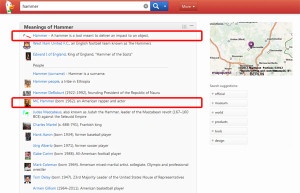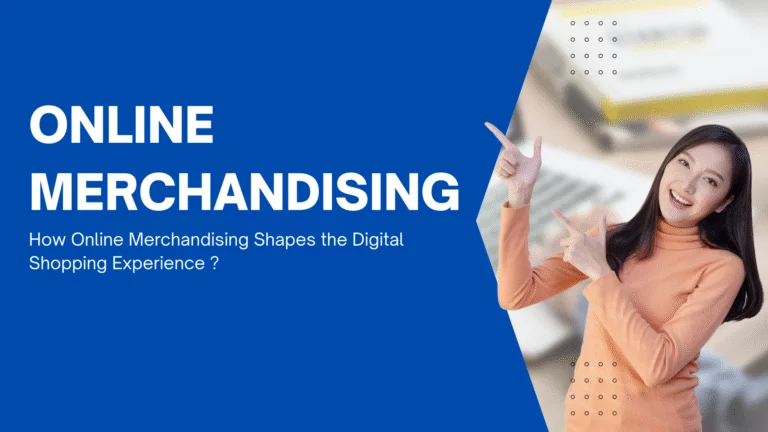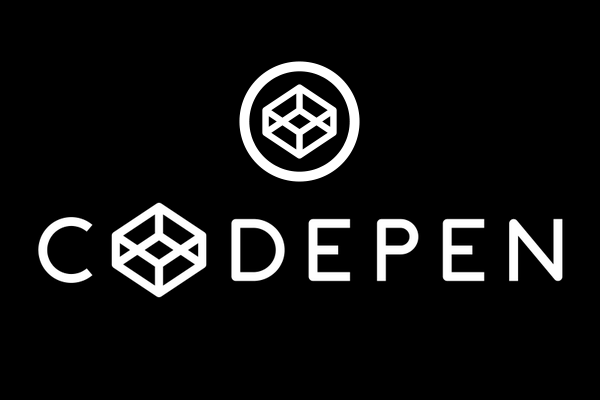Schemas for Your Brand
Welcome to the Kleber & Associates blog! Here’s the latest on Schemas for Your Brand
We’re asked quite frequently about search engine optimization and how our clients can get the best search engine ranking. While the answer to that question used to be about keywords and site structure, the answer today is content. Don’t get me wrong: good site structure is still very important and having a well-defined list of keywords can help you focus your content, but the absolute best thing you can do to improve your page rank is to provide fresh content that keeps people coming back to your site. Search engines now recognize good content similar to the way a human would:
Is it relevant to the topic searched for? Is it interesting? Does it encourage users to read more? Is it related to other reputable content sources?
In short: write for humans and search engines will reward you.
But sometimes search engines have difficulty understanding what content actually means and how it relates to other content on the web. The difficulty goes back to semantics: search engines are, after all, only robots.
Luckily search engines are working fast and furious to solve the problem of semantics to deliver the most relevant results. HTML5 introduced to us a library of new markups, or schemas that can be used to better define the content we publish to make it more search friendly.
Read more…
In: Digital Communication Comments Off on Schemas for Your Brand
Search and Semantics: What It MEANS For You
Welcome to the Kleber & Associates blog! Here’s the latest on Search and Semantics: What It MEANS For You
Semantics. It’s the study of meaning. And it’s the future of search. As humans we have an intuitive sense of what semantics are. Every day we communicate by stringing words together into sentences to create and send a message. We know that individually, the words have little meaning, but when combined with other words they can hold tremendous meaning. And when we change just one word in the sentence or the order of the words, the meaning can change drastically.
Look at the following two sentences:
1. It’s time to hammer.
2. It’s hammer time.
When you read the first sentence you probably thought of a hammer, nails and a piece of wood. When you read the second sentence, however, you probably envisioned MC Hammer dancing in his signature pants. Semantics. Whether or not you knew it before, you know what semantics are.
Computers, however, do not know what semantics are. They don’t understand semantics because they don’t understand meaning. To a computer every input and output is just a string of ones and zeros.
Here are the same two sentences from above, but this time how a computer interprets them:
1. 01001001 01110100 10010010 01110011 00100000 01110100 01101001 01101101 01100101 00100000 01110100 01101111 00100000 01101000 01100001 01101101 01101101 01100101 01110010 00101110
2. 01001001 01110100 00100111 01110011 00100000 01101000 01100001 01101101 01101101 01100101 01110010 00100000 01110100 01101001 01101101 01100101 00101110
This is essentially what search engines have always boiled down to: finding the best match between the input binary code and all of the documents on the internet. As technology has progressed, programmers have worked to make search engines better “understand” what we mean by the words we use in our searches. But there’s still a lot of work to be done. While the example I used above is quite silly, it demonstrates my point quite nicely. If you type in the two sentences into a search engine you will get very similar results, because the search engine doesn’t understand how changing the order of the words changed the meaning and connotations of the sentence. Similarly, typing “hammer” into a search engine will deliver a variety of results from business websites to articles about MC Hammer.
One of the best examples of semantics and computers is demonstrated in Watson, IBM’s genius computer that defeated Ken Jennings on Jeopardy! One of the biggest hurdles that IBM had to overcome in creating Watson was getting the computer to understand the question being asked because Watson, as a computer, cannot interpret semantics. The success of Watson on the game show proves that computers are closer than ever to being able to understand and interpret semantics.
IBM isn’t the only one working on solving the semantic problem. Google is reportedly working on semantic search technology. What might these search results look like you ask? Lucky for us there are already a number of search engines out there that employ semantic search. The screen shot below is from www.duckduckgo.com. A search for “hammer” delivered a number of possible meanings that I could be searching for. I highlighted two to demonstrate how powerful the technology is: a hammer used for construction and MC Hammer. (click image to view larger)

Subsequently, I can click on whichever meaning I am searching for and receive a list of search results about that one meaning of hammer. Rather than a Google search where you have to sort through the results by hand to find what you are looking for, semantic search is able to organize the results according to the various meanings of the key term.
If you have an iPhone 4S, you’ve also experienced semantic search. Siri relies heavily on Wolfram Alpha (along with Google), a semantic search engine, to interpret questions and deliver accurate results. Considering this, semantic search seems inevitable for Google if it wishes to stay competitive. Combining this with social search will create a very powerful tool for all of us that should deliver extremely relevant, meaningful information.
In: Research, Social Media Comments Off on Search and Semantics: What It MEANS For You
Through A Customer’s Eyes: Change Your Online Strategy in 18 Minutes
Welcome to the Kleber & Associates blog! Through A Customer’s Eyes: Change Your Online Strategy in 18 Minutes Here’s the latest.
Remember our discussion of the when-not-if mentality in social media? In case you missed it, the article talked about adapting your social media strategy at a moment’s notice based on current trends and your audience’s preferences. In that spirit, I believe that a social media strategy is not a static document… it is a dynamic mindset. It’s not a plan that you dust off once a year and tweak slightly. Your online action plan should be flexible, adaptable and responsive.
To avoid getting stuck in a rut and to keep your mind thinking dynamically about your (or your brand’s) online presence, here are 4 steps to help you continually adapt your online strategy in 18 minutes. 
1. Be a customer.
Select a company that you regularly do business with as a customer. Spend one minute on its website. Why? That’s how long the average person will stay on one website. After the one minute, take another minute and make some notes for yourself. What do you remember? What caught your eye? Was it easy to navigate? At the end of one minute, did you want to keep surfing or were you ready to leave?
Total time: 2 minutes
2. Be a social customer.
Decide which two social networks you, personally, are most active on (not for business purposes, these should be your personal profiles where you share information about you). Pick a company that you regularly do business with as a customer; this should be a different company than used in step one. Search for the company on the two social networks. Spend one minute on each network and look at the search results. What do you find? Does the company have a profile? What are people saying about it? What kind of content is the company producing? Again, write notes on your observations for one minute.
Total time: 3 minutes
3. Be a searching customer.
Pick your favorite search engine. Type in the name of a third company that you do business with. Read the title and description of each of the top 10 search results. Take one minute and make notes on what these 10 search results tell you, as a customer, about the company.
Total time: 2 minutes
4. Be a mobile customer.
Take out the mobile device you use most often. Select yet another company that you frequently patronize and visit its website on your mobile device. Spend one minute browsing. Are you taken to a mobile site? Is the site designed responsively? Are you prompted to download an app? What kind of information is available? Does the site load quickly or is your minute spent waiting to view a single page? Again, write one minute worth of notes.
Total time: 2 minutes
Repeat these four steps, this time using four of your brand’s competitors.
Now review your notes. What did you see that wowed you? What made you cringe? Open your company’s website and social networking pages. How can you make your online presence better using your notes from this exercise? What would you, the customer, want to see changed?
Keeping up with changes in online communication is a daunting task. Remember: it’s a continual process. Try to go through this exercise often because constant monitoring of the landscape will help you stay relevant.
Did you find something unexpected in your 18 minute search of online communication? Share it with us below!
In: Brand Management, Social Media Comments Off on Through A Customer’s Eyes: Change Your Online Strategy in 18 Minutes
Google Brand Pages and Insights: What you need to know
Welcome to the Kleber & Associates blog! Here’s the latest on Google Brand Pages and Insights: What you need to know
Very recently, Google made two big announcements – one you probably heard about, and the other you probably didn’t. Most people know that Google finally introduced brand pages for Google+, its social network launched this summer. Since the beginning, brands have been trying to get on to the site but Google has 
But more important than all that is the effect these pages will start having on search and online advertising. With the introduction of the +1 button, internet users could rate pages that they like, indicating to their friends which sites may be worthwhile and which are not. In essence, the +1 button made search more social. And now brand pages will make it even more social by aggregating all the +1 of a brand or company into a central location. The +1 history of a user and people in their circles will factor into the Google search algorithm to make search results more relevant to each person. In addition, this data will be factored into the Google Ad targeting algorithm, taking into account the +1 activity of a brand’s connections and the +1 activity of paid ads. Content that the brand generates with high +1 activity (on any platform) will feed information into the targeting information, allowing brands to better target ads and increase their influence. Google doesn’t just want brands to use this as another communication platform; it wants brands to increase their cumulative online presence.
Another announcement by Google last week flew lower on the radar and was overlooked by many companies in the excitement of Google Plus. Think Insights with Google was officially 
- 70% of smartphone users use their device while shopping in stores
- Search activity doubles after becoming a mom: moms conduct 21 searches per week vs. 11 for non-moms
- Adding seller ratings to a search ad can boost click-through rates by more than 10%
In addition, Think Insights for Search (still in beta) also offers a wealth of information about search trends like:
- Canada produced the most searches for home building on the internet, followed by Australia and the US (Montana was the state with the highest number of searches for home building)
- Green home building is the top rising search in the home building category
Allowing you to organize search data by regions as small as cities, businesses can tap into this knowledge bank to improve their search optimization and online ad targeting. It also gives access to case studies and insights like the Zero Moment of Truth theory, organized by industry, media platform, audience, and marketing objective. I highly recommend that you spend some time on these sites… discovering what information is available.
All in all, it was a big week for Google and a big week for businesses looking to improve their online presence. How do you plan to use Google+ Brand Pages and Insights for your brand?
In: Research, Social Media Comments Off on Google Brand Pages and Insights:



